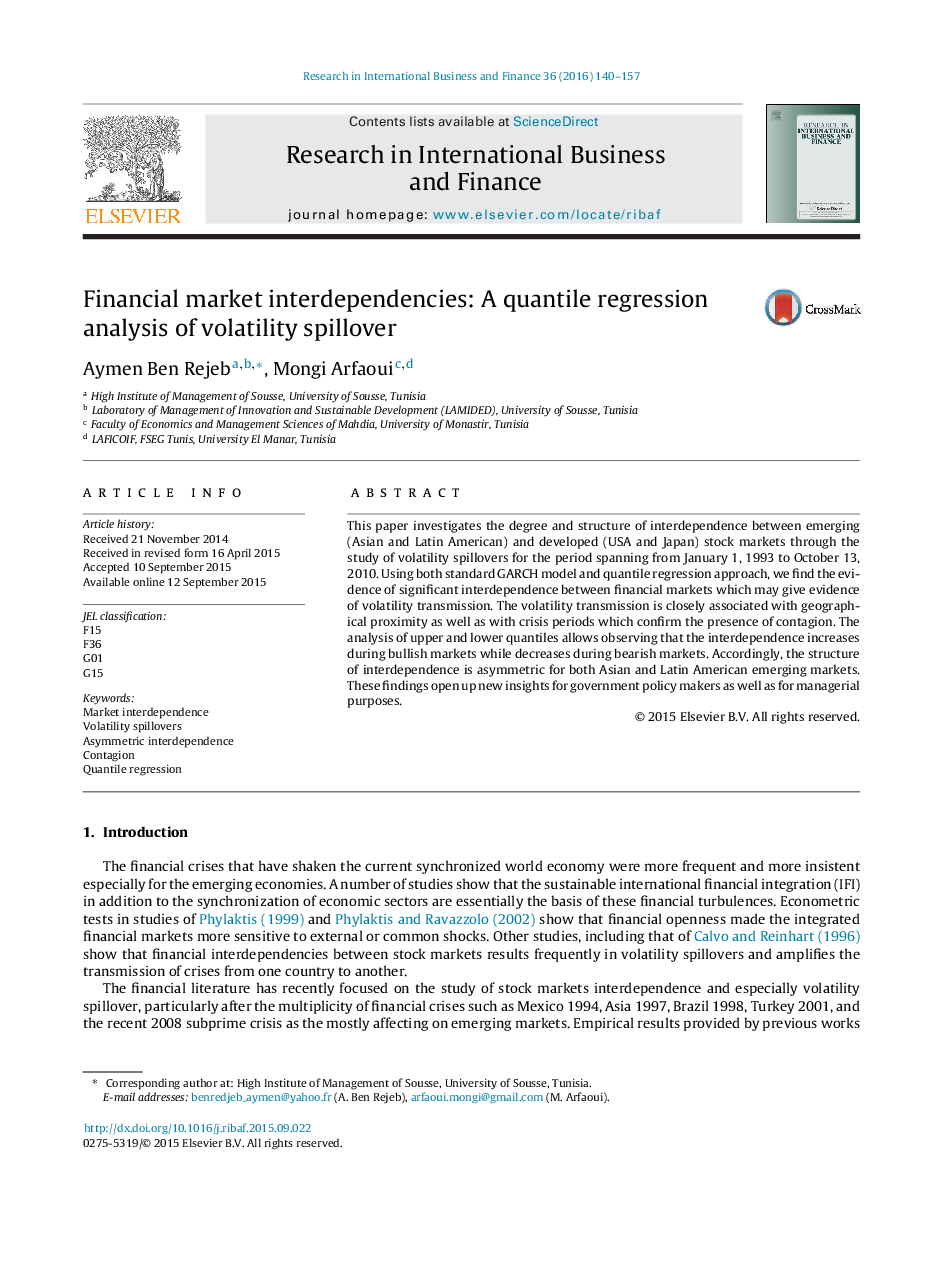| Article ID | Journal | Published Year | Pages | File Type |
|---|---|---|---|---|
| 1003505 | Research in International Business and Finance | 2016 | 18 Pages |
•We aim to investigate the structure of interdependence between emerging and developed stock markets.•We adopt a methodology characterized by its suitability for non-standard shaped distributions.•Volatility spillover is effective between emerging and developed markets and across emerging markets.•Geographical proximity is of great importance in an amplifying volatility transmission.•Interdependence increases during bullish markets while decreases during bearish markets.
This paper investigates the degree and structure of interdependence between emerging (Asian and Latin American) and developed (USA and Japan) stock markets through the study of volatility spillovers for the period spanning from January 1, 1993 to October 13, 2010. Using both standard GARCH model and quantile regression approach, we find the evidence of significant interdependence between financial markets which may give evidence of volatility transmission. The volatility transmission is closely associated with geographical proximity as well as with crisis periods which confirm the presence of contagion. The analysis of upper and lower quantiles allows observing that the interdependence increases during bullish markets while decreases during bearish markets. Accordingly, the structure of interdependence is asymmetric for both Asian and Latin American emerging markets. These findings open up new insights for government policy makers as well as for managerial purposes.
